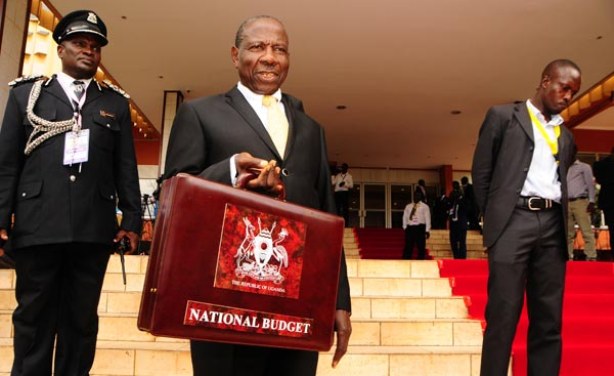
There has been public raucous roar over the indication from Government of Uganda that over 65 private firms approached Government with a request to be bailed out of their financial distress worth an approximate tune of UGX 1.3 trillion of public funds. It remains to be seen whether the said funds will be a Government equity, debt or gift to the private firms. This tune is said to have arisen from their bank loans at high interest rates, Governments’ arrears related to non-payment of goods and services (both in Uganda and South Sudan), coupled with the loss of market opportunities due to the war in South Sudan among others. This poses questions on how best the Ugandan economy policies and programs can be restructured to invigorate sustainable private sector growth and expansion of equitable and fairly-oriented economic opportunities .
The Bailout question has unearthed many loopholes in the economy which need attention before any decisions are made that could have a negative impact on the economy. It is imperative to check on implication of the Government proposed bail out in respect to public debt, equity, business environment. It’s critical to also look at bail-out implication on public sector service delivery financing and general citizens’ welfare, loan performance and banking sector growth, as well as the Charter of Fiscal Responsibility to be discussed soon by the 10th Parliament of Uganda. These issues need concerted effort of all stakeholders so that together we can work with Government on formidable and sustainable approaches to economic growth and development of Uganda.
Legitimate debt or not?
It has been said that some companies actually supplied goods and services to the Republic of South Sudan but may not have been paid, in some cases of over the years like since 2013 when the war broke out in that country. The circumstances or policy conditions that the Government of Uganda has to settle debt obligations of another sovereign State need to be explored. Similarly, in 2007 Ugandan private sector companies were involved in the 2007 Kenya electoral period and mayhem, with huge losses. Were these supported by Government through a financial facility to counteract their losses? Otherwise, there may be a risk of preferential treatment of the South Sudan case. Should attention also be paid to other exporting firms that export elsewhere but have suffered instances of financial distress?
Where is the place of prudent Public sector finance management?
If the Public Finance Management Act (PFMA) 2015 is anything to go by, it raises issues whether the 65 and over companies have so far been identified through a process that reflects transparency, given that use of public resources in Uganda in involved. How will the money under the bail-out be accounted for and/ or refunded? Together, we need to support the mechanisms for prudent finance management as per the PFMA and attendant legal, policy and institutional regimes in place.
Bail-out as Government Equity, Debt or Gift?
Again learning from other economies, the US Government under the Troubled Assets Relief Program (TARP), had by beginning of 2014 achieved both the bail-out and investment earnings worth at least $11 billion for the all the taxpayers through this modality. It saved/ or created more than 1 million jobs, stabilized banks and restored credit availability for private sector firms and individuals that prevented foreclosures of the firms. So, when Government of Uganda has forked/ or forks out the said UGX 1.3 trillion of public funds to private enterprises, we need to see clear benefits (in financial and non-financial terms).
We also need to be crispy as whether and how such action transforms into Government equity, debt or gift. Already Uganda’s public debt portfolio at approximately $8.81 billion by end of FY 2015/16 (i.e. June 2016) with a) External debt ($5.48b) and Domestic debt ($3.32b)- as per the Budget Speech for FY 2016/17 fiscal period. We need to support Government in ensuring that an additional UGX 1.3 trillion debt or action, benefits the entire Ugandans in explicit terms.
Lessons for Government from previous Bail-outs;
Government of Uganda has, in the past, bailed out or handled cases similar to the proposed UGX 1.3 trillion e.g. a) the non-performing loans of the former Uganda Commercial Bank under the Non-Performing Assets Recovery Trust (NPART) from 1995 and b) In 2004 President Museveni directed Bank of Uganda to bail out Mr Basajjabalaba with UGX 21 billion of taxpayers’ money. Also, in 2005, Mr. Museveni ordered a Shs13.4 billion tax waiver for Mr. Bassajjabalaba–. We need to support Government in disseminating feedback that such funds were refunded and accounted for by the private companies that benefited from those windows.
In the 2013-2014 case of a local investment, Sembuule Steel Mills that was said to have a bank debt of UGX 7 billion for capital development with Bank of Baroda and failed to raise the money to pay back the debt. While the plant was said to be worth UGX 50 billion the bank took over the ownership of this company, Government did not grant the plant’s request for bail out. So together, we need to support Government on transparent criteria (policy or legal instrument) in circumstances under which to bail out determining which private company qualify when, where and how for Government bail-out. That way, we all add value to the struggle corruption and possibility of abuse and connivance over public resources.
Increasing public debt and Bail-out junction;
The continued increase in public debt and, specifically, domestic debt should be a concern. For example, while the budget for FY 2016/17 was UGX 26.3 trillion, a sizeable portion of UGX 7.9 trillion or 30% of the entire national budget was due to debt repayment and restructuring. This is to the detriment of direct service delivery. How much more will service delivery be stifled, given an additional UGX 1.3 trillion off the national budget? Or from which national budget vote are such hefty funds coming from? This provides an opportunity for increased transparency about national budget financing for which Uganda progressively has been rated highly, under the international Open Budget Survey (OBS) results of 2010, 2014 and 2015.
Recommendation
The UDN stand point is that even in the presence of the Public-Private- Partnership (PPP) law in Uganda, Government bail-out of private sector firms should have a clear policy and associated legal framework for handling selected companies that are distressed but strategic to the economy. This will help in assessing the implications of each firm and value addition and relevance to the economy (e.g. tax contribution, sustainable employment, unique service or product). The policy should transparently show how public funds will be invested (equity or debt) and fully recovered.
Way Forward:
Uganda Debt Network (UDN) with a vision of seeing a prosperous Uganda with equitable development will take the following steps in amplifying the campaign to ensure all Ugandans are informed and make right decisions for the good of the economy.
UDN will continue to:
i) Engage with the Prime Minister, for he originated a letter to the President for the bail-out.
ii) Engage with the President to delve on the urgent need for critical economic reforms in Uganda, since the said bail-outs are only a tip of an iceberg in our economy.
iii) Continue sensitising and consulting with Ugandans across the country on which way around bail-outs.
iv) Work with Parliament on issues of transparency and accountability, budget implication on the national budget, equitable access to Government resources, debt and criterion for selection of the over 65 companies so far.
Together for a Better Uganda.












